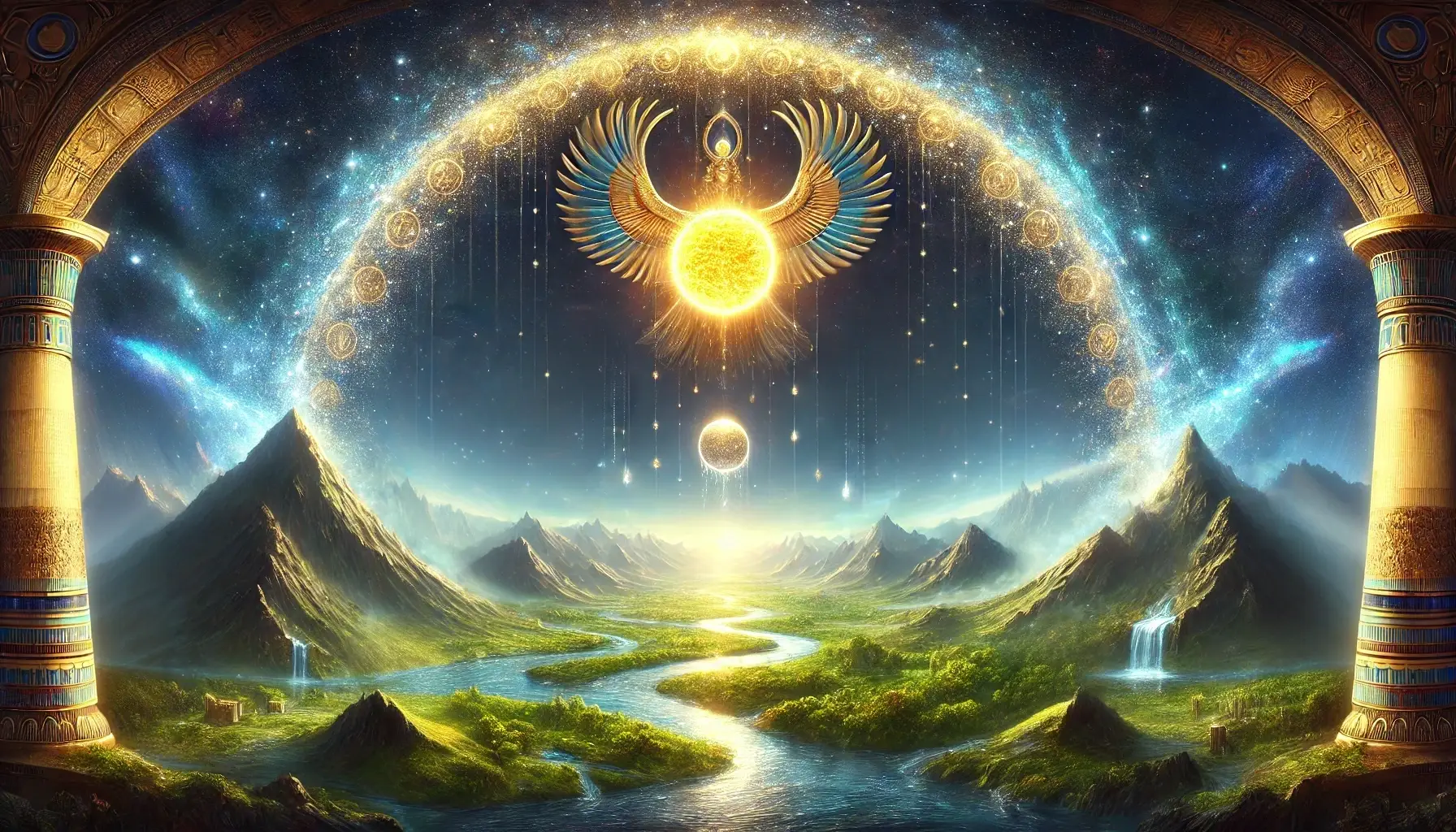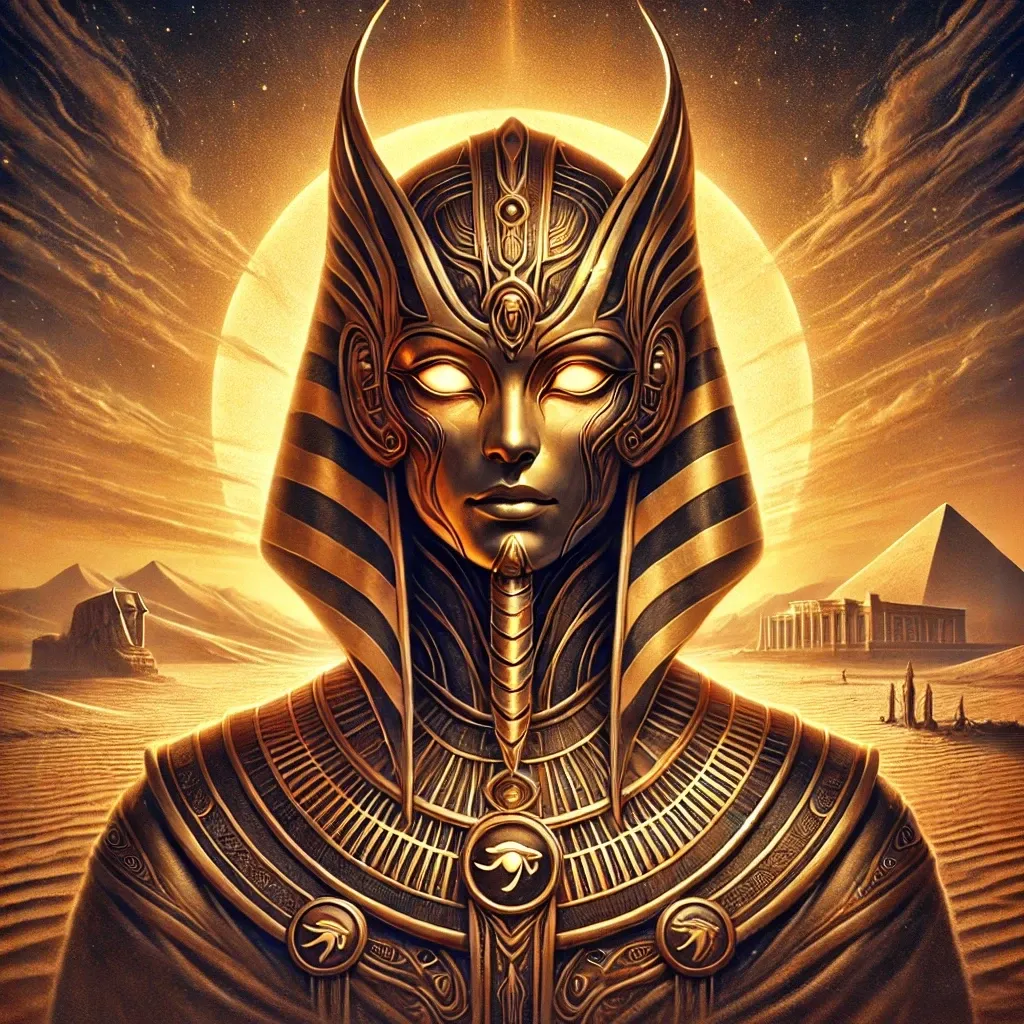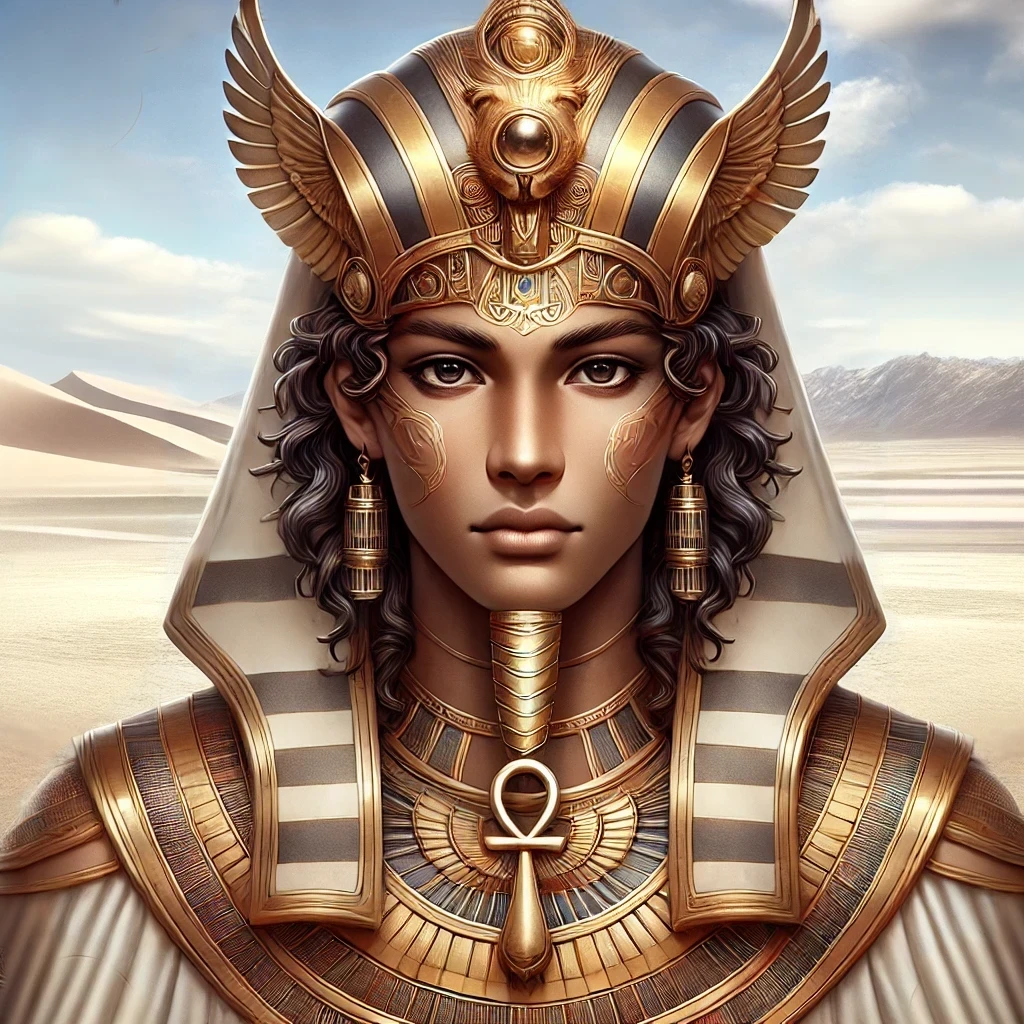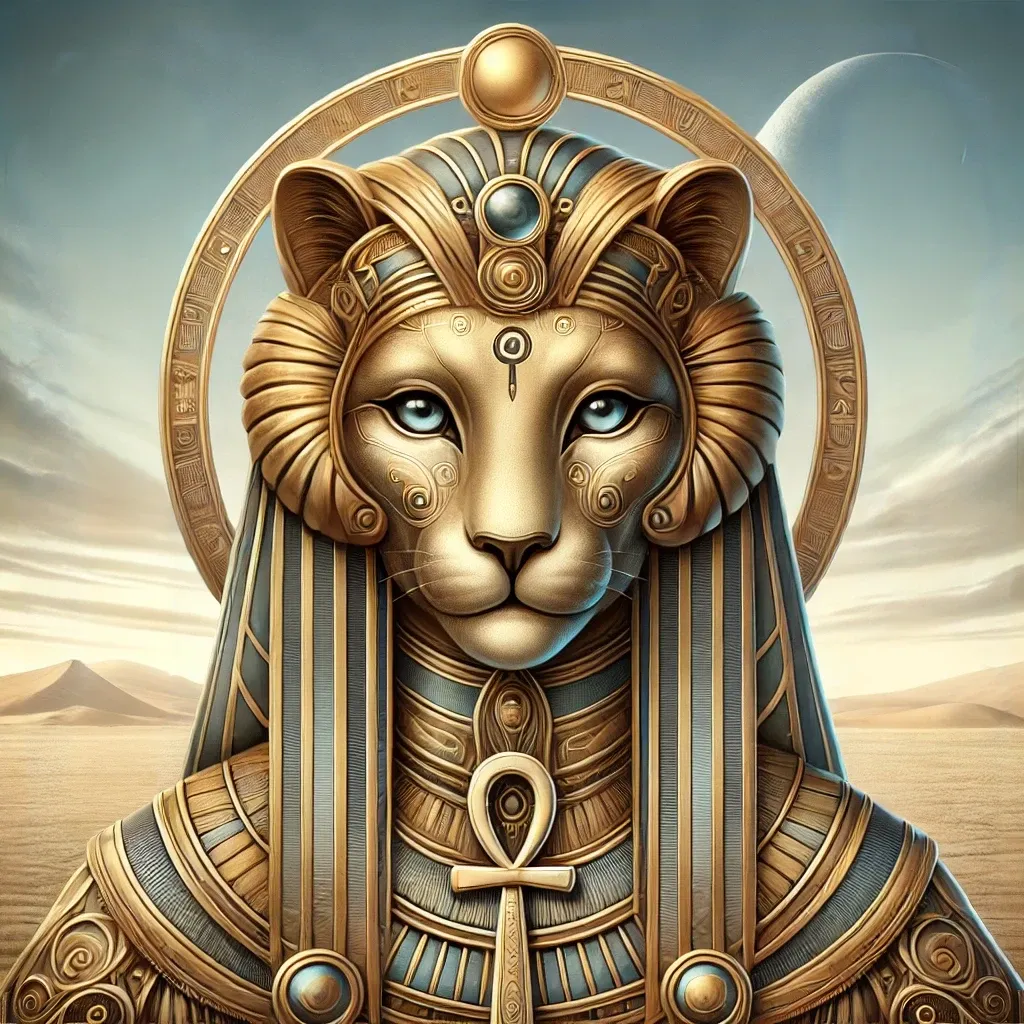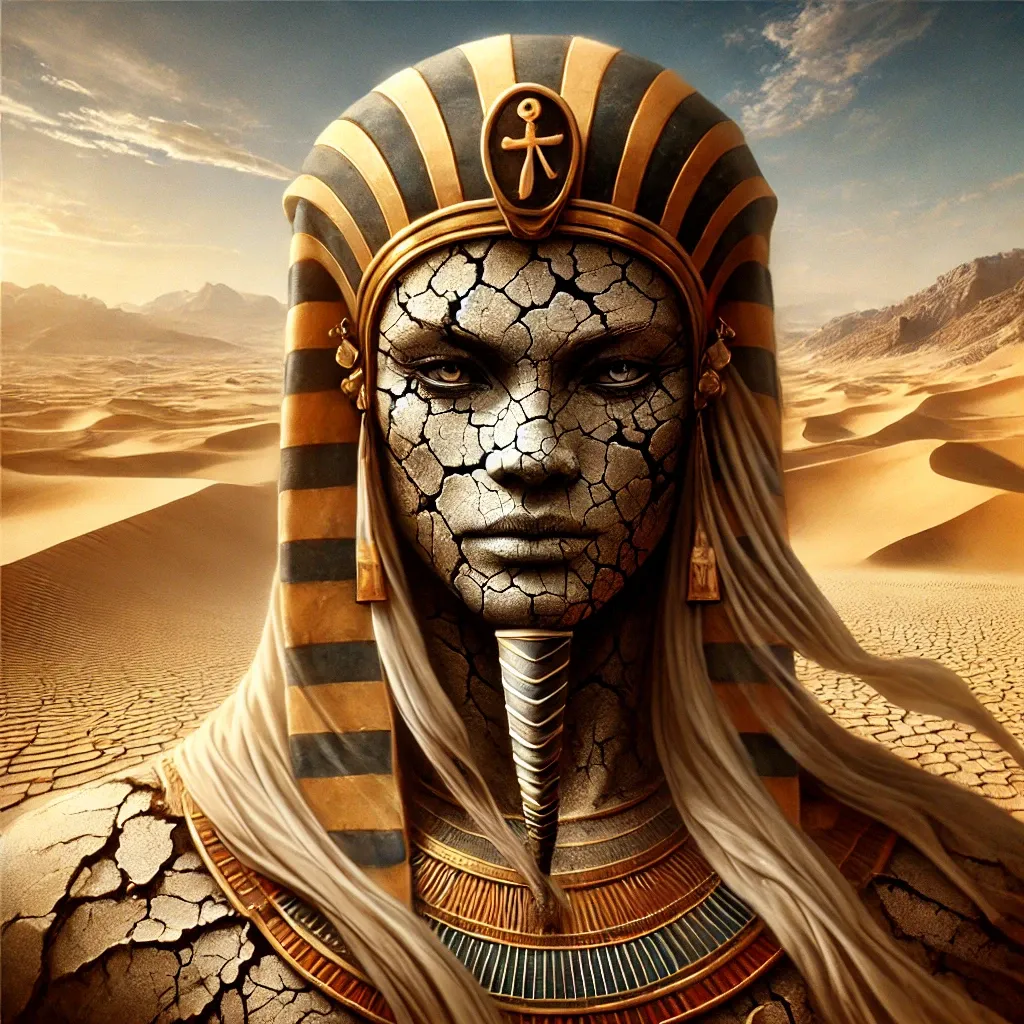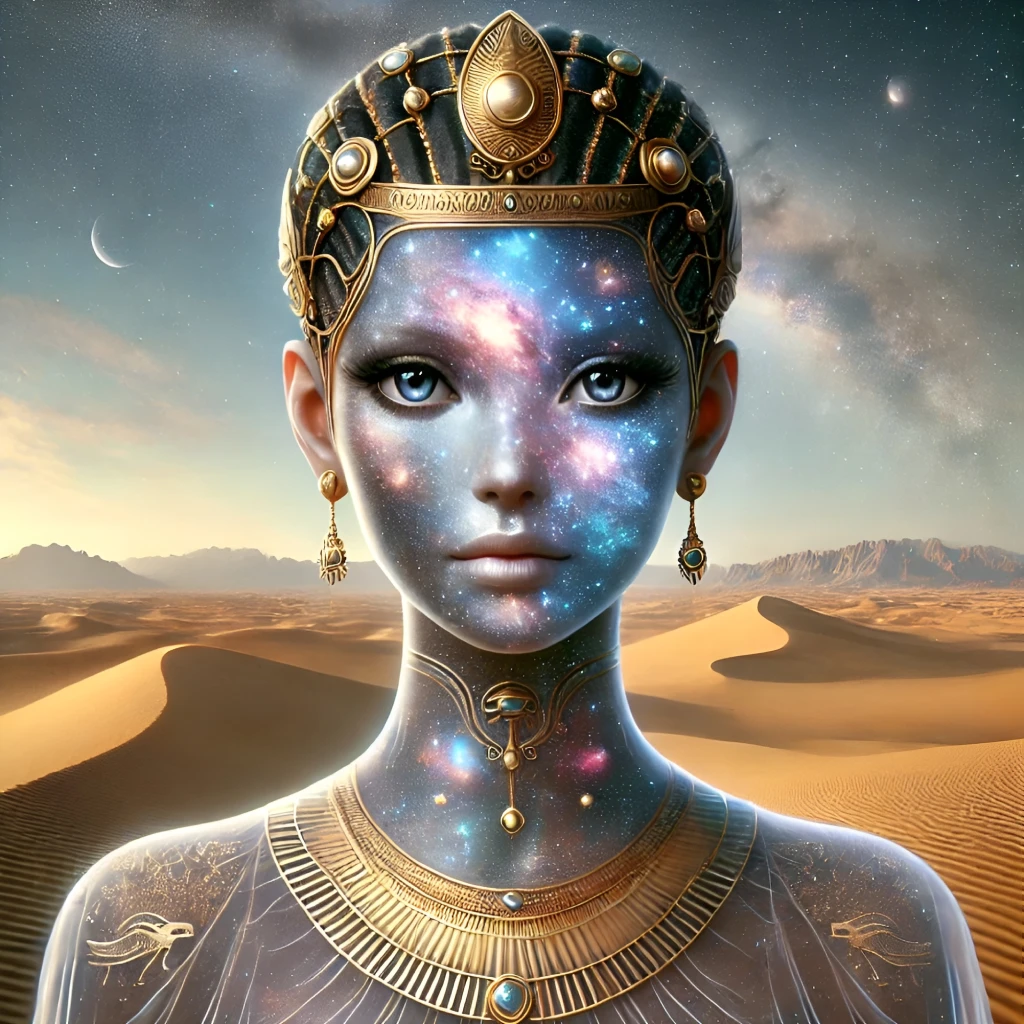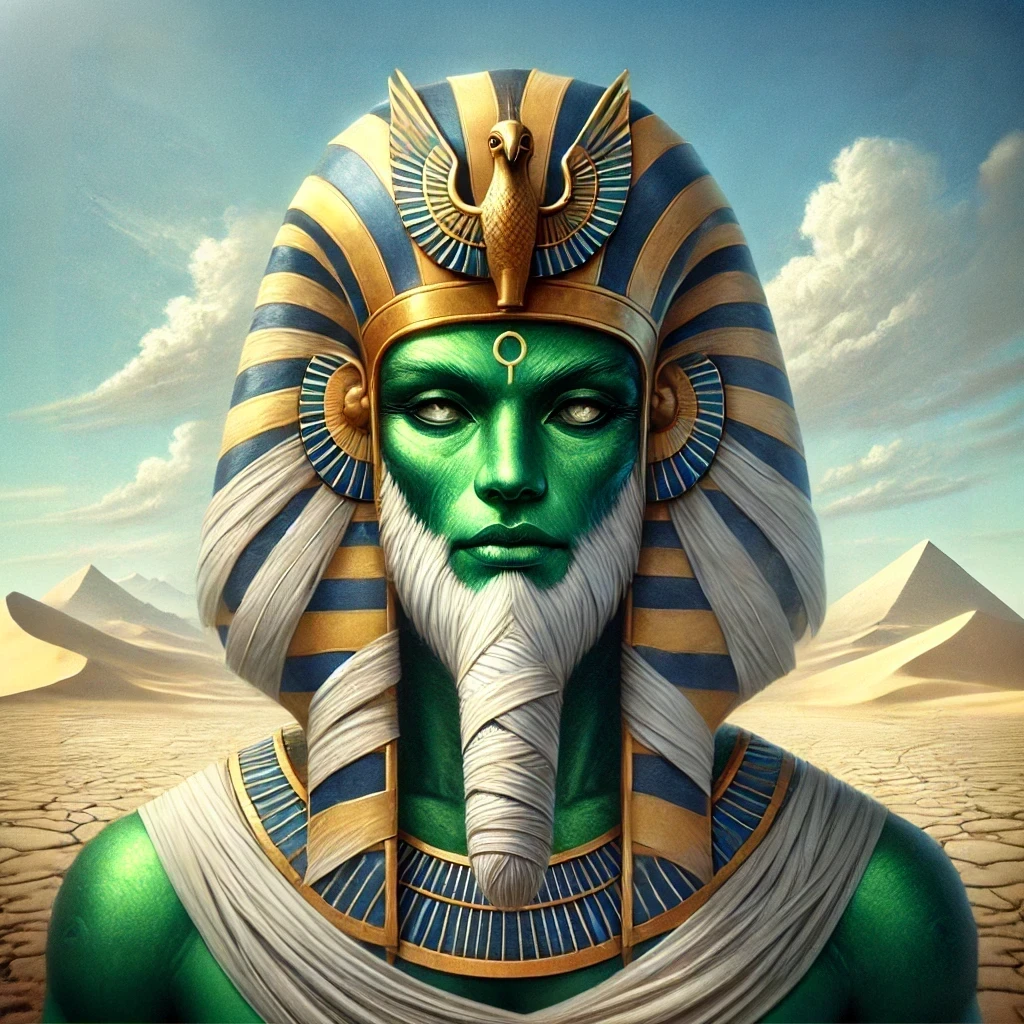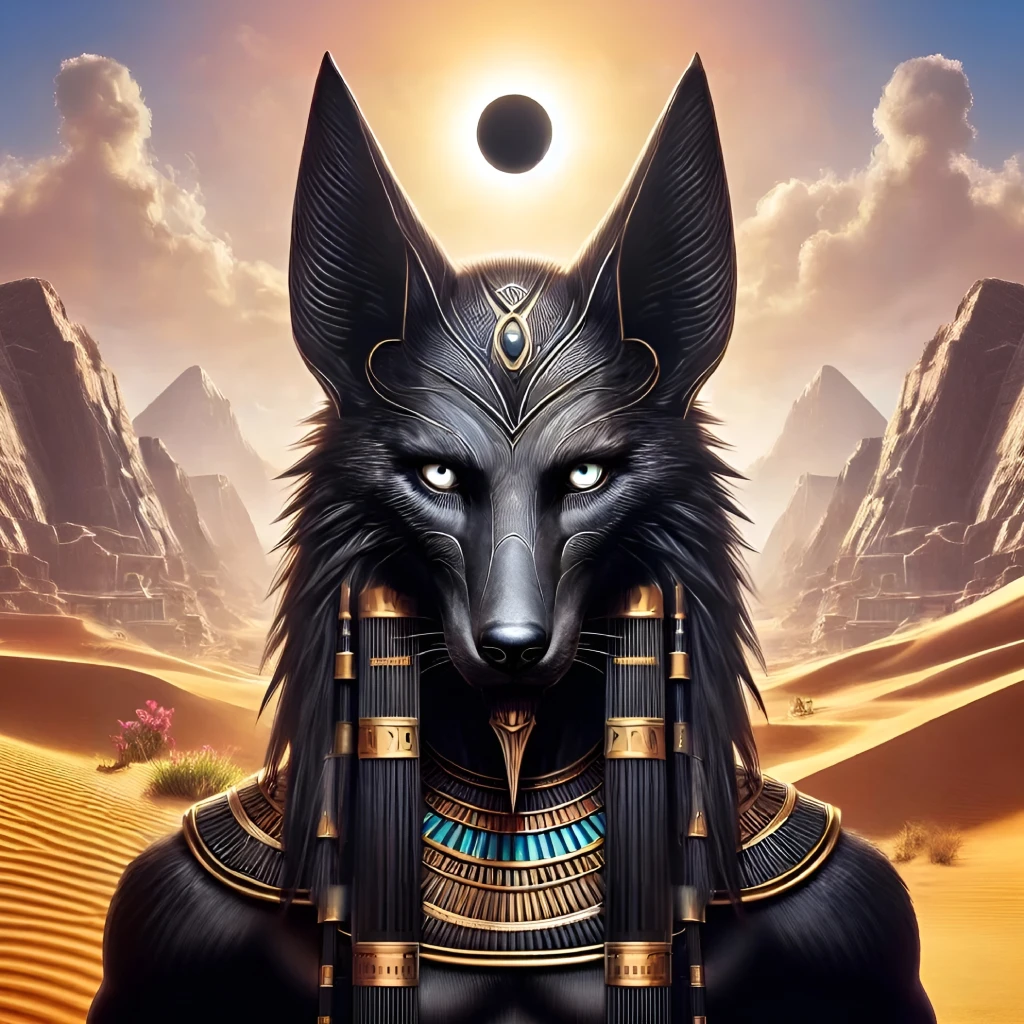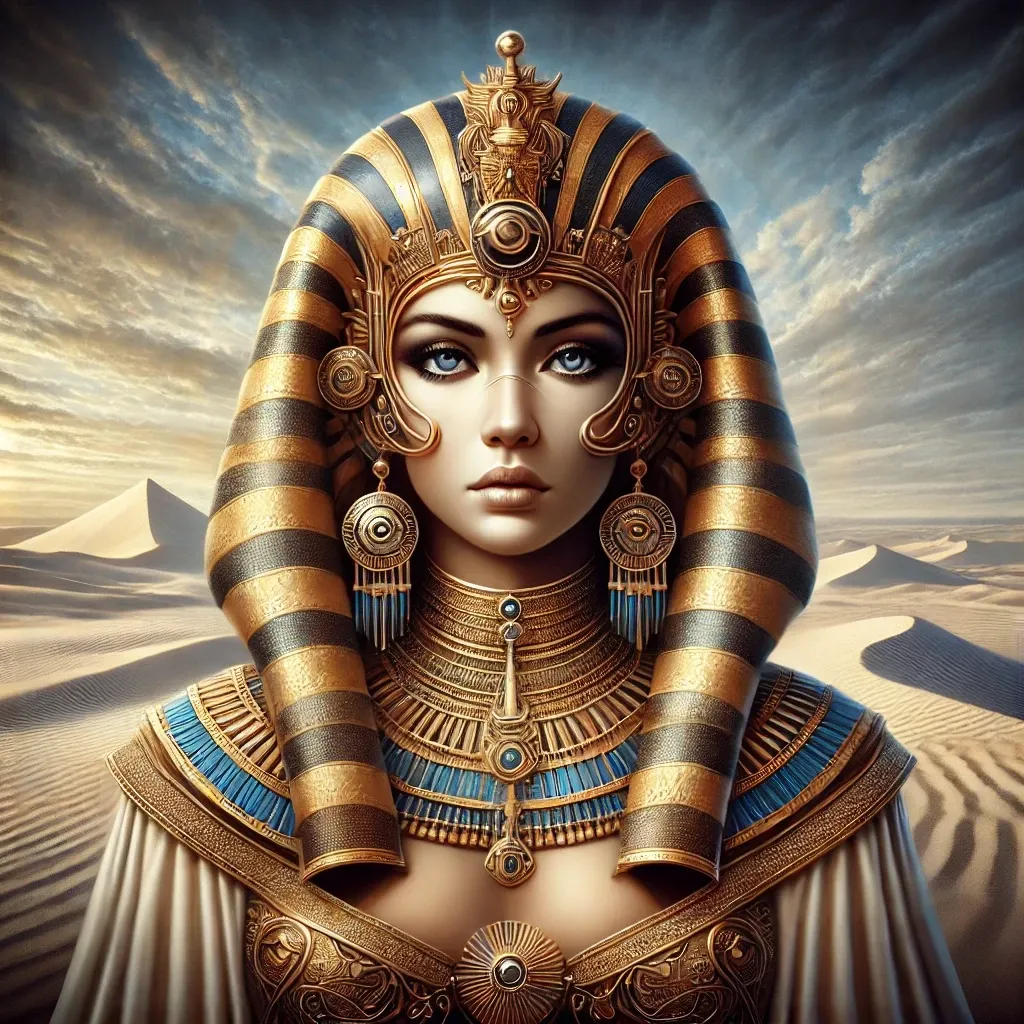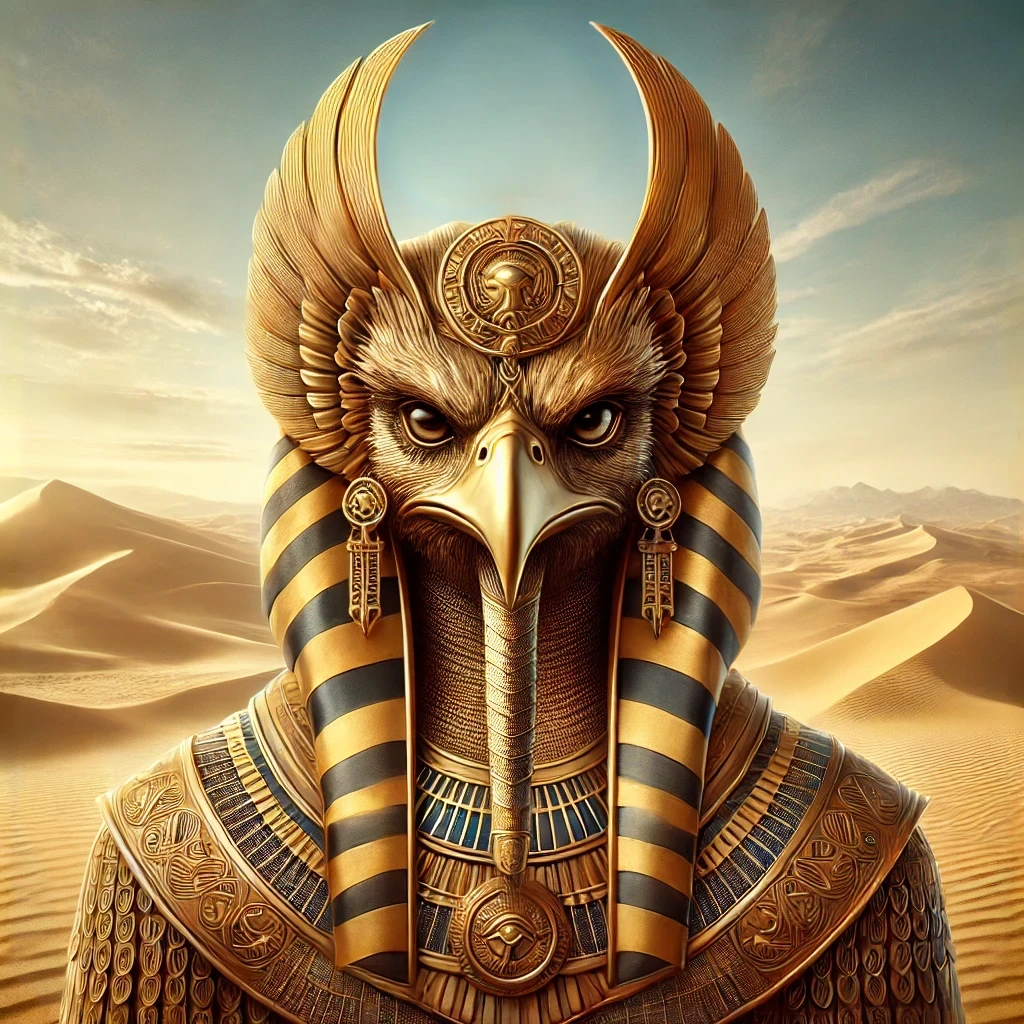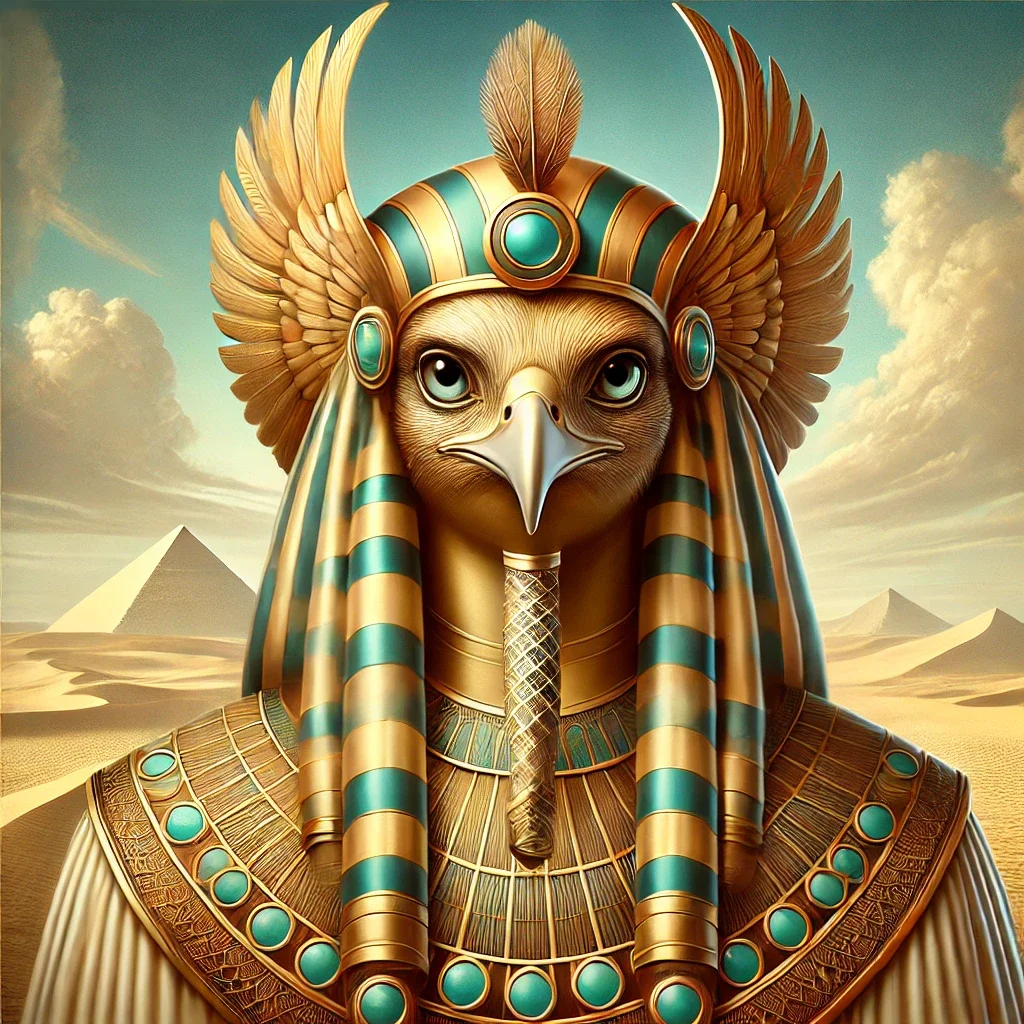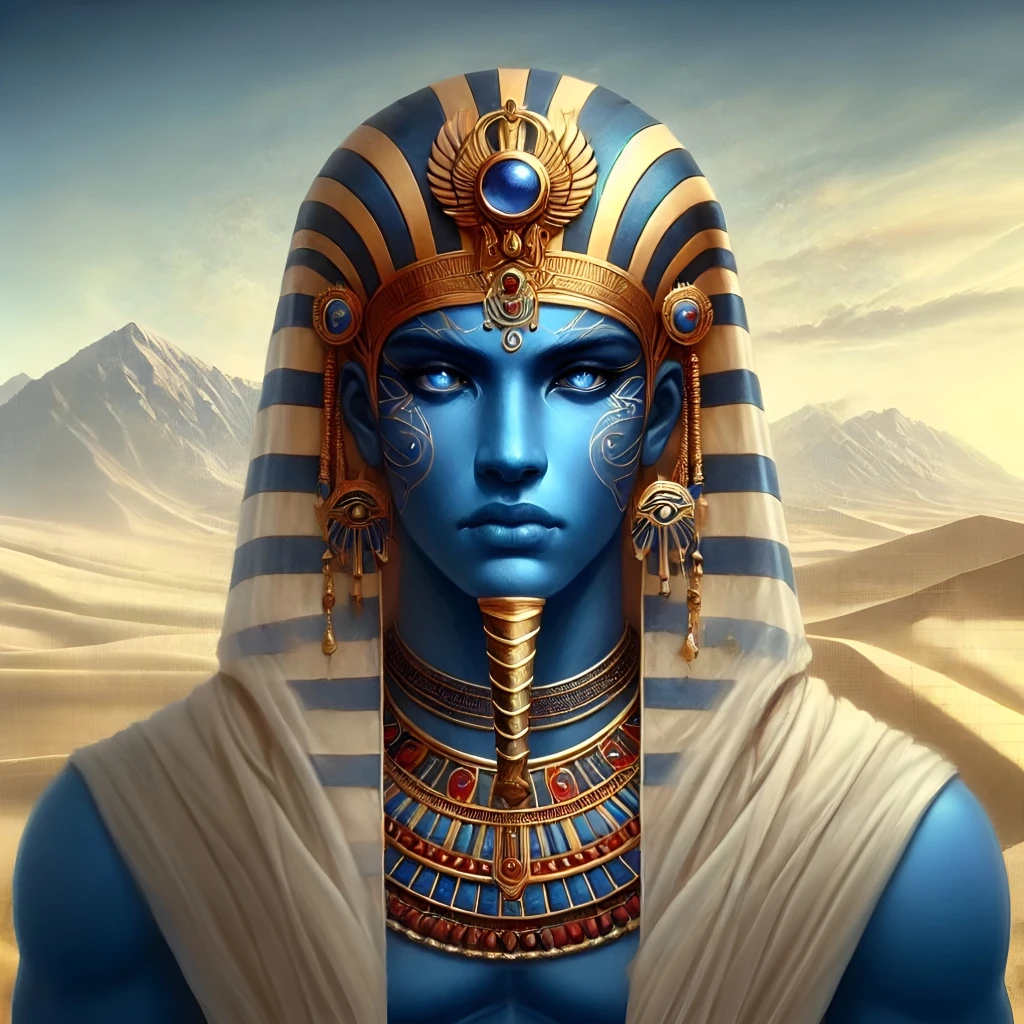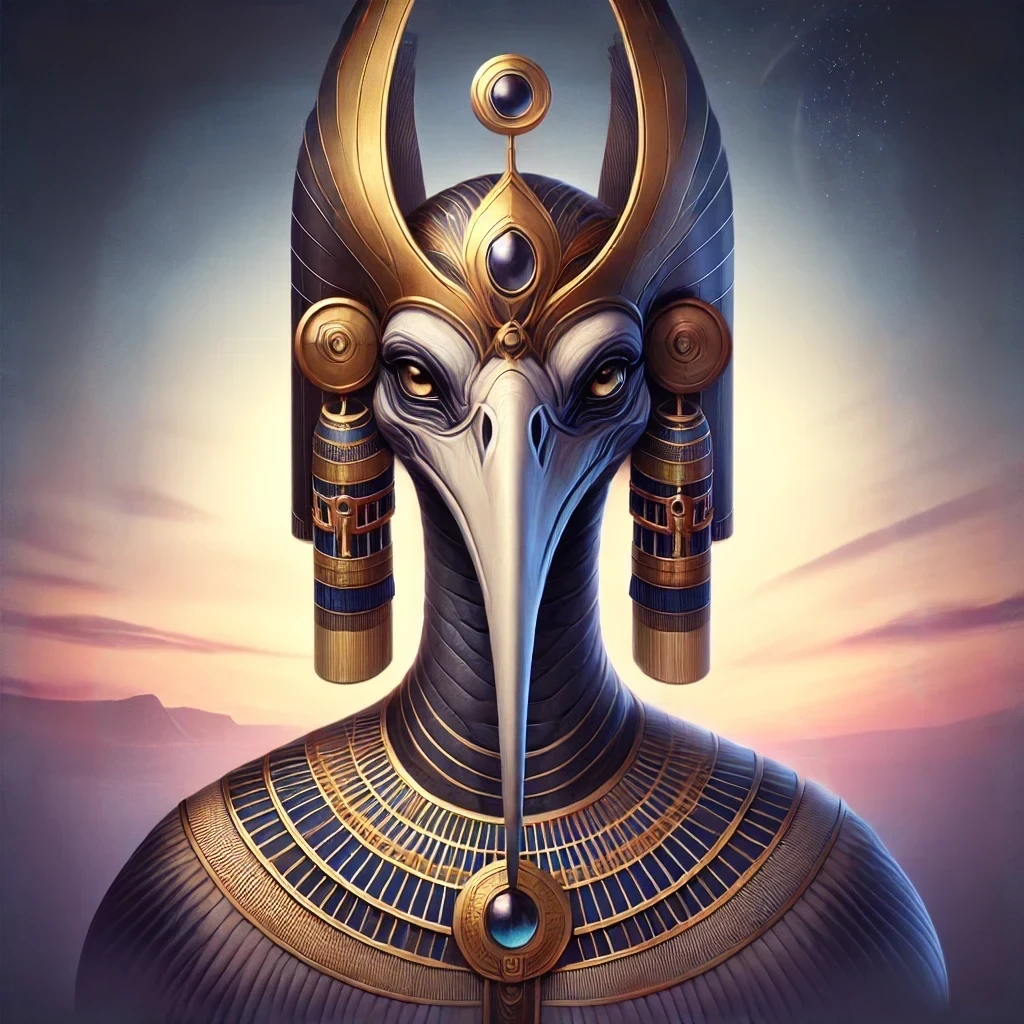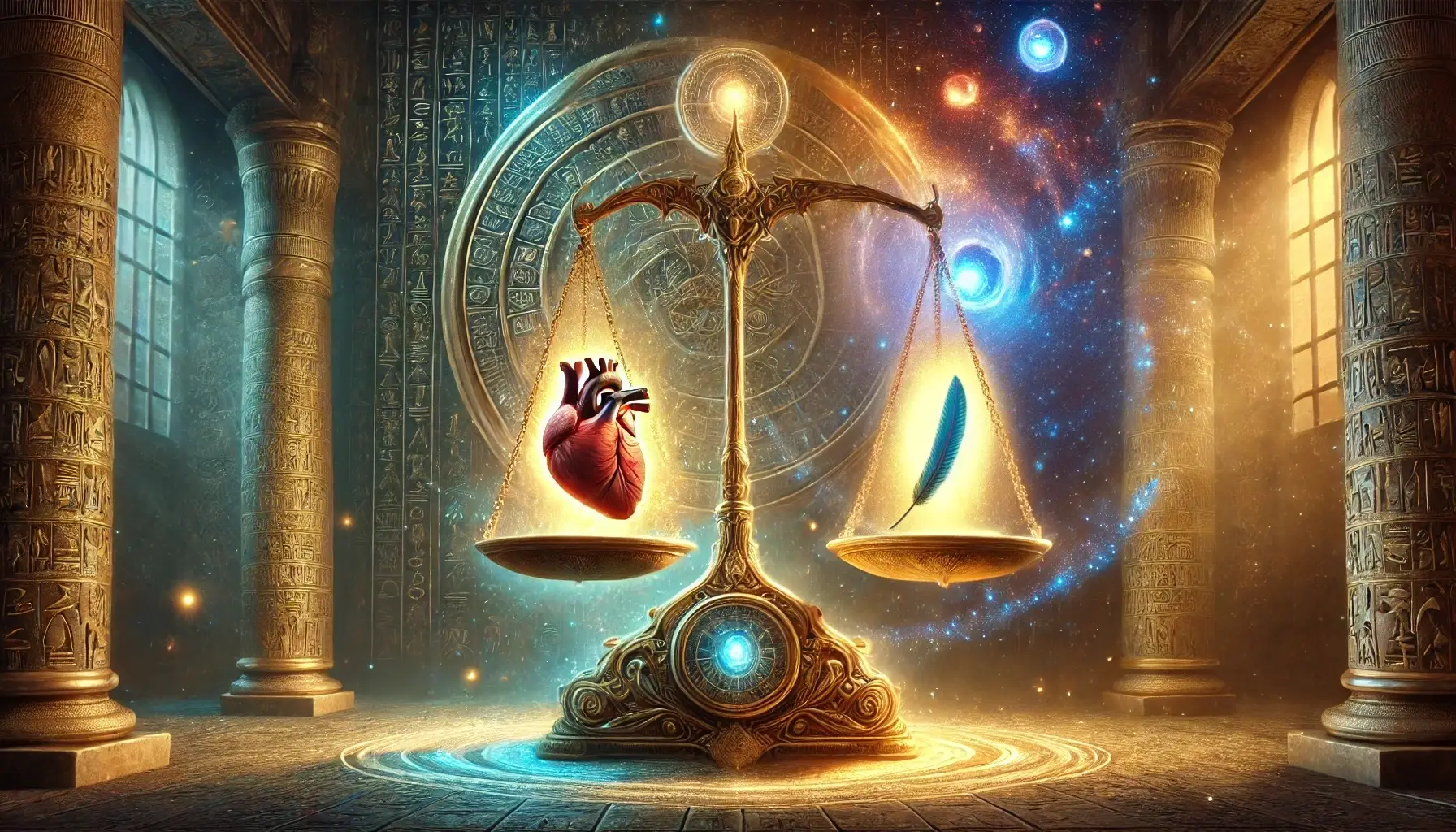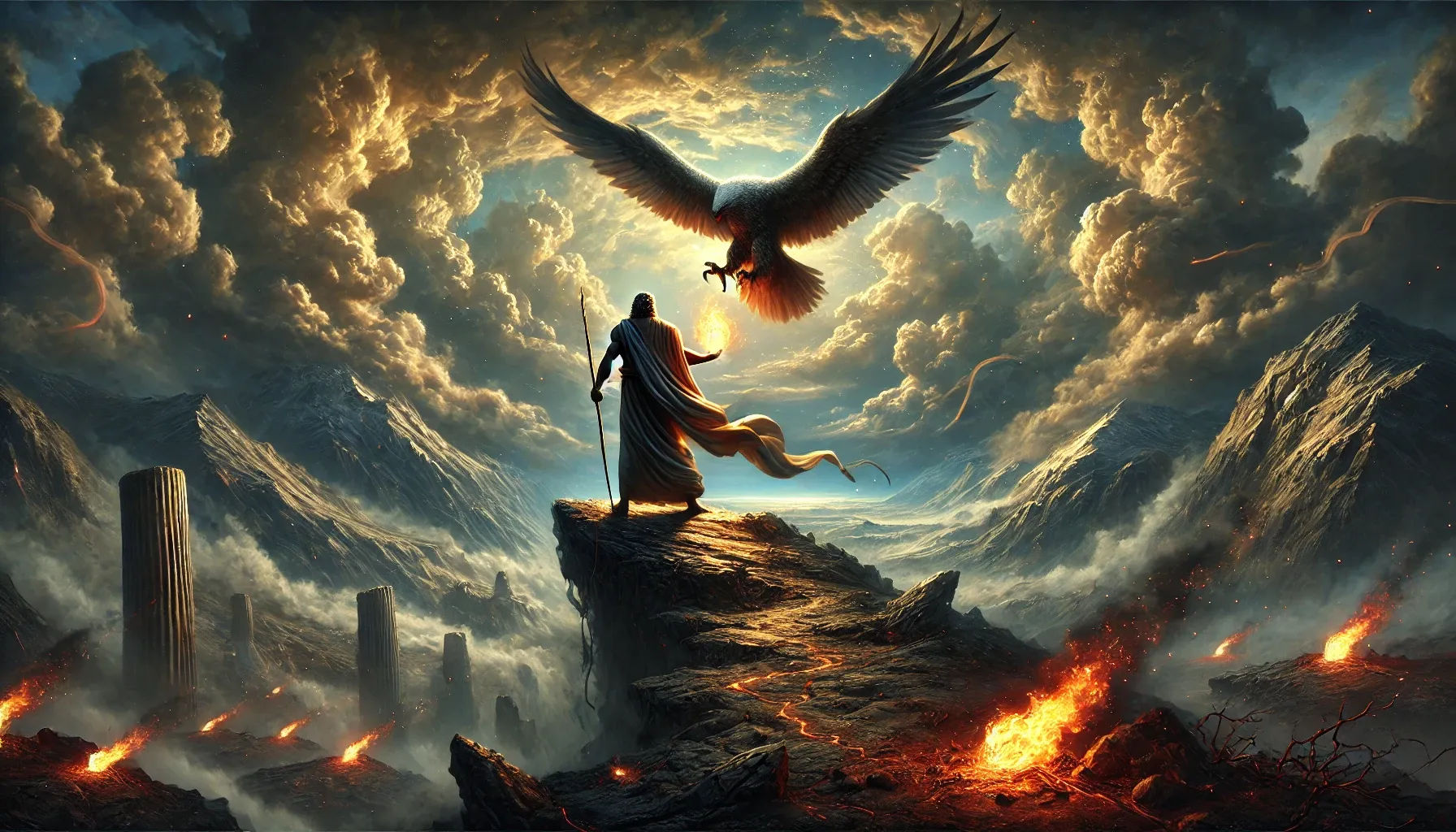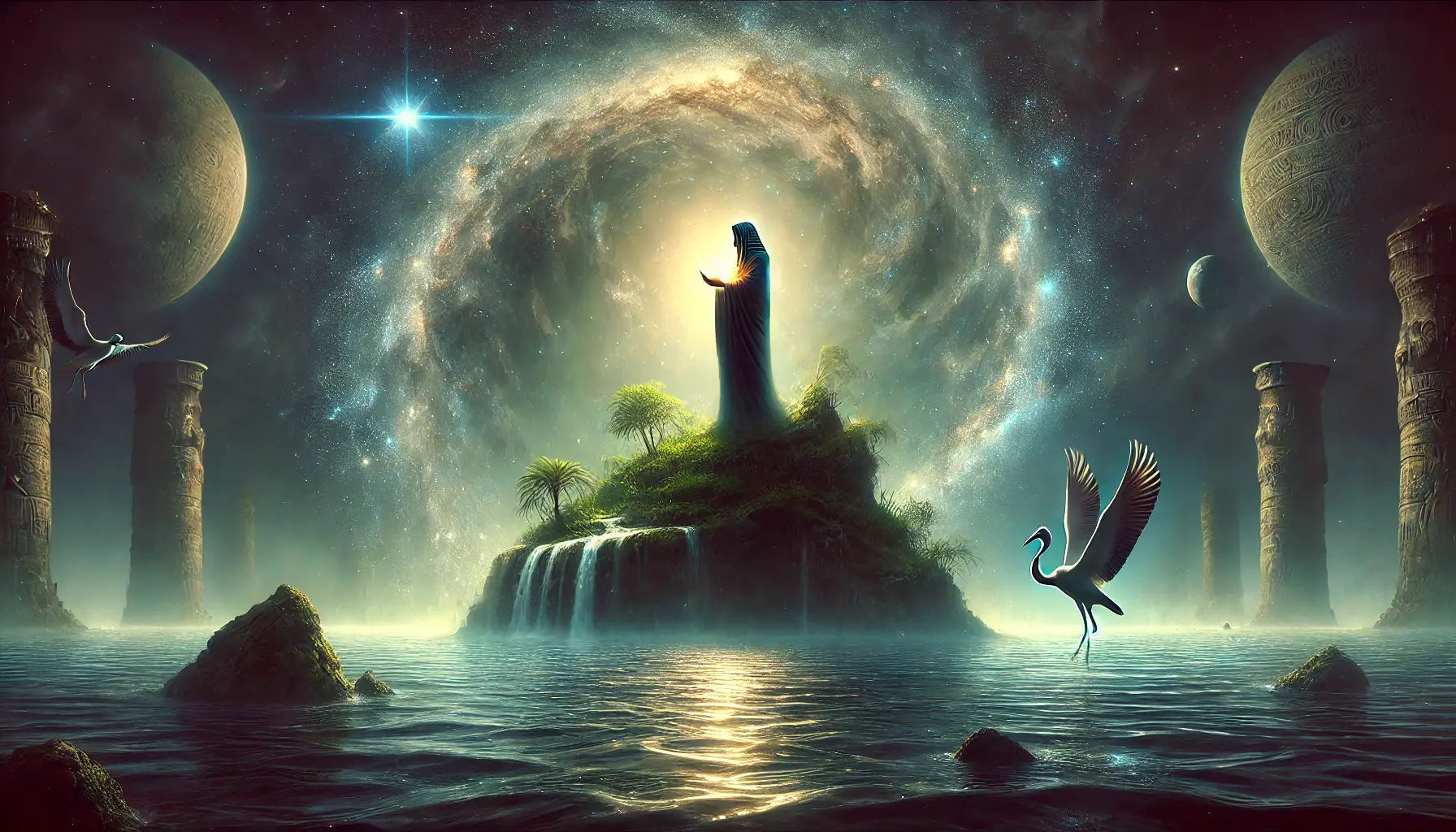The Primordial Waters and the Birth of the Creator
In the earliest days, before the light of the sun pierced the darkness, there existed only the endless expanse of the Nun, the primordial waters. The Nun held within it the potential for all creation, a formless abyss teeming with unspoken dreams. In this vast void, Atum, the self-begotten one, stirred into being. He emerged from the depths, neither born nor crafted, embodying both male and female forces, a solitary spark of life in the infinite sea.
Desiring companionship and the proliferation of existence, Atum shaped his children from his own essence. He expelled Shu, the god of air, with a sigh of breath and Tefnut, the goddess of moisture, with a tear of joy. These twin deities represented balance, and together they set forth the principles of order (Maat) and chaos (Isfet) that would govern the cosmos.
The Emergence of Earth and Sky
Shu and Tefnut wandered through the void, exploring the nebulous realm of potential. Their union gave birth to Geb, the earth, and Nut, the sky. Geb lay beneath, rich and fertile, while Nut arched above, a shimmering canopy of stars. Atum, observing their passionate embrace, recognized the danger of their unity—for it threatened to collapse the fragile order he sought to establish. He commanded Shu to separate them, lifting Nut high above Geb, creating the vast expanse between heaven and earth.
The separation pained the lovers, whose longing became the heartbeat of the world. Nut wept for Geb, her tears cascading as rain, while Geb groaned, birthing mountains and valleys. From their aching hearts sprang the seeds of life, plants and creatures to populate the land and sky.
The Creation of the Sun
Nut, swollen with divine potential, bore five children: Osiris, Isis, Seth, Nephthys, and Horus the Elder. But it was her first creation—the sun—that brought forth the defining rhythm of existence. According to the will of Atum, Nut labored for eons to craft Ra, the great solar disk, from the depths of her body. When the time came, Ra emerged as a radiant sphere, blazing with divine energy. Shu lifted him high, placing him in the firmament, and Ra began his eternal journey across the sky.
Ra’s brilliance banished the shadows of chaos, and his light nourished the earth, awakening life in its many forms. Yet his journey was perilous. Each night, he descended into the underworld, navigating the treacherous river of darkness. There, he faced Apep, the serpent of chaos, who sought to devour the light and plunge the world back into primordial night. Ra’s triumph over Apep each dawn was both a cosmic battle and a renewal of hope, a reminder of the eternal struggle between order and disorder.
The Creation of the Moon
The moon came forth as a reflection of the sun’s glory, a softer, cooler light to guide the night. It was Khonsu, the lunar god, who embodied this celestial phenomenon. Born of Amun and Mut, Khonsu was a healer and a protector, his silver glow a balm for the weary and a guide for the lost.
Legend tells that Thoth, the god of wisdom and time, played a pivotal role in the moon’s creation. In an act of cunning, Thoth gambled with the moonlight, wagering with Khonsu to win additional days for the year. Thoth’s victory carved the moon into its phases, its waxing and waning a perpetual reminder of cycles and change. These extra days allowed Nut to bear her children and gave mortals time to celebrate life amidst its fleeting nature.
The Eternal Balance of Sun and Moon
As Ra journeyed across the sky, Khonsu followed, casting his gentle light upon the world when Ra descended into the underworld. The interplay of sun and moon created the rhythms of day and night, a harmony that echoed the balance of Maat. Yet their relationship was not without tension. The sun’s dominance often cast the moon into shadow, while the moon’s phases seemed to challenge the sun’s constancy. This dynamic reflected the duality inherent in creation: light and dark, permanence and change.
Mortals, gazing upward, wove stories to make sense of the heavens. They saw in the sun’s rise the promise of renewal and in the moon’s cycles the inevitability of transformation. Priests in white linen raised hymns to Ra at dawn and chanted prayers to Khonsu under the starry sky, acknowledging the gods’ intertwined destinies.
The Journey of Ra and the Rebirth of Light
Ra’s nightly descent into the Duat, the underworld, was fraught with peril. Aboard his solar barque, he navigated the dark waters, accompanied by gods and spirits who aided him in his trials. At the heart of the Duat, Ra confronted Apep, whose monstrous coils sought to extinguish his light. Each victory was hard-won, the serpent’s hiss a chilling reminder of the ever-present threat of chaos.
As Ra’s barque emerged victorious at dawn, the world held its breath, marveling at the rebirth of light. The horizon blazed with color, a testimony to the enduring power of creation. Ra’s triumph was not just a cosmic event but an emotional resonance that stirred the hearts of gods and mortals alike, reminding them of the fragile beauty of existence.
The Moon’s Silent Vigil
Khonsu’s role was quieter, yet no less vital. His silver light brought solace to those in darkness, his phases marking the passage of time with gentle persistence. Lovers whispered their vows beneath his glow, and travelers found their way guided by his radiance. The moon’s influence reached into the mysteries of the human spirit, touching dreams and stirring reflections.
Thoth, ever the observer, recorded the interplay of sun and moon, his quill capturing the cosmic dance. He saw in their relationship the embodiment of wisdom: the need for balance, for light to illuminate and shadow to soften. Thoth’s records became the sacred texts, the foundation for rituals and the inspiration for poets who sought to capture the divine in words.
The Final Revelation
As the myth unfolded, its truths were not merely etched in stone but breathed into the lives of the people. Farmers rose with the sun, their work a hymn to Ra’s vitality, while the moon’s phases guided the planting of crops and the marking of festivals. The sun and moon became more than celestial bodies; they were living symbols of resilience and renewal.
One clear night, as Khonsu’s full orb hung in the sky, a priestess stood on the temple’s edge, gazing upward. The desert winds whispered secrets, and in the moonlight, she felt the duality of existence—the tension between chaos and order, light and dark, life and death. Tears welled in her eyes, not from sorrow but from the profound beauty of it all. She lifted her arms in silent prayer, her silhouette framed by the moon’s glow, a living echo of Nut stretching toward the heavens.
In that moment, the heavens seemed to pause. The stars shimmered like scattered gems, and the sands below gleamed with lunar light. The priestess’s heart swelled with understanding, a fleeting glimpse of the divine balance. And as the night deepened, the moon’s glow softened, cradling the world in a luminous embrace, whispering of cycles unending and the eternal dance of creation.
The light lingered, painting the dunes with silver before fading into the embrace of dawn, where Ra’s barque emerged once more. The world awoke to the sun’s triumphant return, yet the memory of the moon’s vigil remained—a quiet reminder that even in the deepest darkness, there was light to be found.
